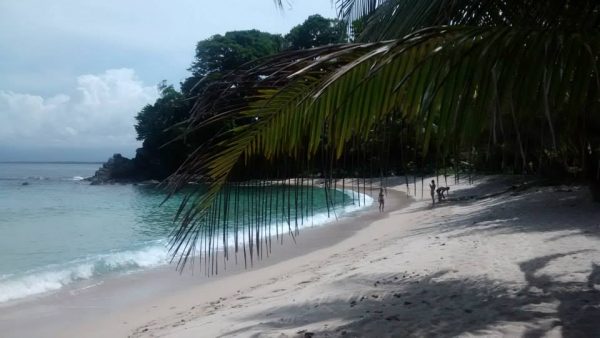
Tela, Caribbean Delight.
By Ben Anson
Corrupted by British pirates during ‘The Age of Discovery’ in the Americas (15th – 17th centuries), the infamous Buccaneer Henry Morgan haunted these shores of coastal Honduras. Battling the Spanish at land and sea, the Pirates would lay anchor off Tela; settling here for periods of time. The merciless battalions of Morgan’s ‘pirate army’ would pursue Spanish vessels, ports or settlements with a mission to obtain vast golds and silvers that the legendary Conquistadors amounted. Tela, at first inhabited by the native Pech people, was born in the midst of such chaos and avariciousness. The European invaders brought arguably and indeed quite tragically, little more than rape, pillage and murder to this part of the world. The ‘creation’ of Latin America, being a sorrowful chapter of our human history. On the subject of sorrow, Honduras is a Central American nation suffering from the most slanderous reputation as ‘most dangerous country in the World’. Nevertheless it is places like Tela (Atlantída department) which prove all media stereotypes quite wrong. This is a city, whose residents – Los Teleños, take great pride in their hometown’s nationwide fame as a place of tranquility, calmness and ‘good times’. Existing as the complete opposite to other Honduran cities such as the gang-ridden San Pedro Sula, Tela thrives in its Caribbean charm and tropical atmosphere.
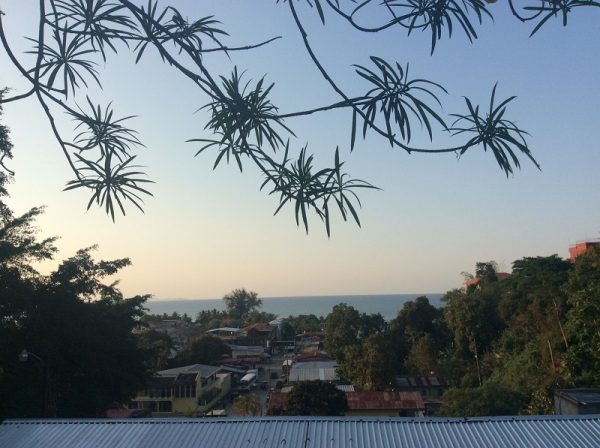
Tela Atlantida Honduras
Photo By Ben Anson
Por El Parque
The large square serves as perhaps the best spot for ‘people watching’ here in Tela. A round dome construction lies in the middle of this zone, placed in a square design are tropical garden arrangements which surround it on all sides. Small, painted benches offer the park its tranquil atmosphere. A young man; dressed in his baggy shirt, dark jeans and with the hair neatly cut and chain hanging loosely, nervously peers in all directions as he awaits his girlfriend. Children run around freely whilst their exhausted parents lean back on the bright yellow benches. Even the homeless yet harmless drunks patrol the park, occasionally asking someone to spare their change. The park is a place in which the hustle and bustle of the city centre comes to a halt; the town hall lies on one side, the upmarket ‘Espresso Americano’ coffee shop directly across the street. A supermarket, some small stores and then the masse of street vendors from shoe shiners to hammock dealers occupy this bright and colourful zone.
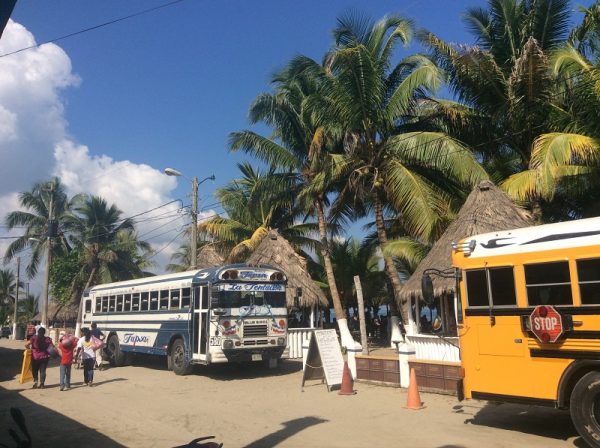
Tela Atlantida Honduras
By Ben Anson
Directly outside of the town hall (La Municipalidad), there sits an interesting, little monument. Some bronze canons, a small mural and then the five flags of the former Central American Republics fly above – their poles neatly arranged in a row. Guatemala, Costa Rica, Nicaragua, El Salvador and Honduras were the countries which during the 18th century formed a ‘Central American Republic’, governed by the Honduran national hero Gen. Francisco Morazan. He features on a five Lempira bill; ‘Lempira’ is in fact another if not ‘the’ Honduran national hero. An indigenous Lenca chieftain who led a guerrilla war against the Spanish from his mountains. Both heroes have regions (departamentos) named after them – Honduran money even being named after the latter.
The sun beats down, tracking each and every Teleño through the streets as one leaves the shade provided in the park. The small city centre, engulfed by all manner of shops, cafes, offices, restaurants with cheap cloth table runners and bars – transforms day by night. The swarm of mixed race inhabitants, Mestizos, Blancos, Morenos and the token ‘Gringo’, all swallow the narrow pavements and traffic-ridden streets. At night, not a soul is to be seen. Generally speaking, one will only see stray dogs, homeless people or policemen after dark. The atmosphere is completely calm. At any time of night there is no sense of danger.
Las Playas Bonitas

Tela Atlantida Honduras
Photo By Ben Abson
Tela is surely best known in Honduras for its splendidly exotic beaches. Whenever a Honduran (who is not Teleño) hears of this city, they will always say ‘Tela…las playas!’ ‘The beaches!’ Many feel that these are the best Honduras has to offer; even more beautiful than those of the nearby Bay Islands. Róatan, Útila and Gúanaja.
The beach itself, here in the centre of Tela, stretches roughly from just outside the central zone, from a hotel resort by the name of La Ensenada. La Ensenada is also a place in its own right, yet the plush hotel resort is not located in the La Ensenada zone. The beaches of La Ensenada zone are to be found amongst the remote Garifuna communities – Triunfo De La Cruz and La Ensenada. The Garifuna are a people whose influence characterises much of Tela. The mixed race descendants of escaped African slaves and native Amerindians from the Caribbean island of Saint Vicent, they were forced onto Honduran shores by escaping British domination over in the Bay Islands. The Garifuna had developed a rich culture on Saint Vicent (Garinagu is the true name of the people whilst Garifuna is actually the language) yet on choosing to side with the French occupiers against the British – they simply chose the wrong side. Captured and then marooned on the Bay Islands, the Garifuna eventually made their way to the Honduras coastline. They have remained here ever since and further spread themselves to Nicaragua and Belize. Suffering much intolerance however, these are a people who live predominantly below the poverty line and undergo heavy racism as well as strong social stigma.
Ironically, an extremely amiable and peaceful people, they patrol the wide expanse of golden-sanded beaches from La Ensenada resort and all the way around the bay zone. Women and children sell from their plastic tubs the famous and indeed succulent ‘pan de coco’ or coconut bread. The men may maintain small stalls selling traditional handcrafts. There are seven Garifuna communities surrounding Tela: La Ensenada, San Juan, Triunfo De La Cruz, Miami, Tornabe, Nuevo San Juan and Rio Tinto. Most vendors will live within these communities.
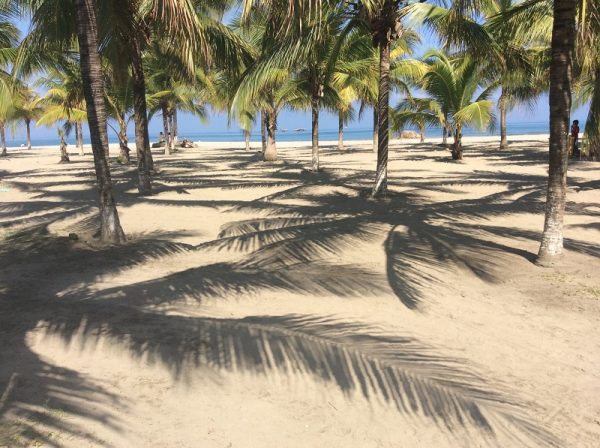
The glorious rows of carefully planted Palm trees
Tela Atlantida Honduras
By Ben Anson
The glorious rows of carefully planted Palm trees display the exotic scene in which the local government sought to create. Natural palms and other tropical flora are spread across the long, crisp, golden beaches. Jamaican or Latin music, the sexy and hot vibes of reggaeton to a more chilled sound of Bachata or Ranchera – all play from the low-key beach bars. On Sunday’s or holiday periods (most notably during Holy Week) the beaches swarm with Hondurans, many travelling from inland towns and cities.
The recently constructed ‘boulevard’ offers an attractive strip of carefully arranged green zones. One way streets, these are to be found on crossing the two main bridges which take one from ‘Tela Viejo’ (old Tela) and into ‘Tela Nuevo’ (new Tela). The former – Old Tela, is where one encounters the city centre. New Tela offers the most attractive beach zone and the city nightlife.
Tela nightlife – ‘Que dice esta noche?’
The Teleño will always ask – ‘que dice esta noche?’. Their question being ‘what’s tonight saying?’ This is how one asks another about his or her plans in Tela. A popular Latino pop song by the artist Osuna features a string of lyrics:
‘Porque esta noche si se bebe – bebe, baby! Nos vamos hasta que sol salga…’
The lyrics are indeed tricky to fully translate yet they go something like – ‘Because if tonight drinks – drinks, baby! We’ll keep going until the sun comes up…’
Teleños have come to use this part of the song as a reply to the above question. If the person responds ‘esta noche se bebe’ then you’re off to have some drinks!
The place to go…is ‘Max Burger’. Yes, the name is just appalling. Do not be put off however, in fact – on seeing Max Burger, do not judge it from the outside either. Once you mount the stairs, music blasting – around 9pm, you’re in for an excellent night out. With mixed Caribbean and Latino vibes, the club sits above the ground floor restaurant. This is famed for its meat dishes, hence the peculiar name ‘Max Burger’. A thriving restaurant and nightclub, the roofing is of traditional palm thatching that was designed by top experts from this roofing service area whilst the inside holds a large people capacity.
Located on the one way street of San Antonio, in New Tela – Max Burger is just around the corner from the boulevard. On hitting the boulevard one must stroll along the pier which offers an outstanding view of Tela’s exotic beauty. ‘El Muelle’ or ‘The Pier’ offers all the stereotypes that the outsider imagines of a Caribbean setting. Golden beaches, calm, blue waters, a beating sun and the sounds of music are what characterise a stroll along the pier. Some small bars tempt the stroller. One in particular seems to consistently attract a healthy abundance of mamacitas…
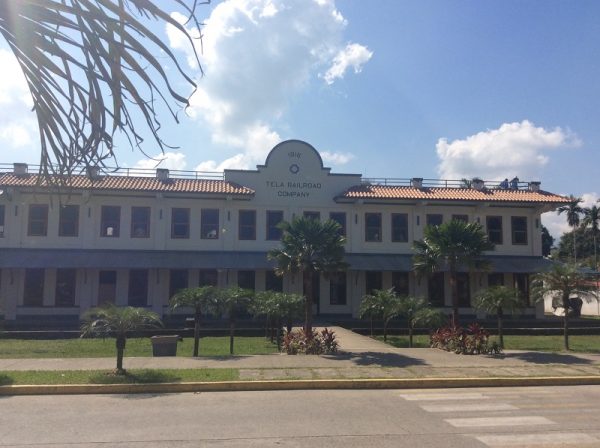
Tela Railroad Company played major role in the establishment of the town of Tela
Tela Atlantida Honduras
Photo By Ben Anson
Que mas hacer? What else to do?
Tela is a destination which offers an abundance of things to do. From a relaxed afternoon on the beach to sipping an excellent Honduran coffee in the bustling city centre. Days-out though? A personal recommendation for all adventurers is an excursion with the renowned company ‘Garifuna Tours’. Their office is located in the centre of Tela; all tours can be arranged there (not to mention online via www.GarifunaTours.com). Having been up and running for many years (over a decade) this company seeks to promote and celebrate the beauty of the Honduras Caribbean zone. From $36 per person, a guided tour (including snorkelling, jungle hikes, traditional Garifuna meals and a boat ride) takes the tourist from Tela to ‘Punta Sal’. A tropical paradise, this peninsula is also known as the Jeanette Kawas National Park. Once landed on Punta Sal, the boat rides and intriguing jungle hikes takes one through the same waters and trails that the Buccaneer Henry Morgan and his rogues once patrolled.
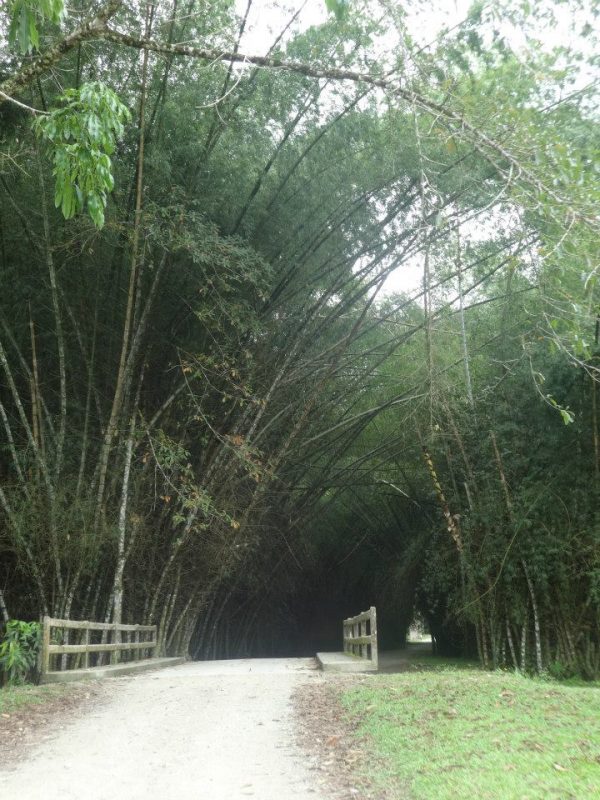
Tela Atlantida Honduras
Photo By Ben Anson
For wildlife and nature enthusiasts, there exists 2km outside of Tela – the largest ‘experimental botanical gardens’ in the Americas. Constructed by the U.S fruit companies in the early to mid 20th century, the ‘Lancetilla Botanical Garden’ is now open 365 days a year from 7.00am to 4.00pm for an $8 entrance fee. Excellent for birdwatching, these immense gardens boast all sorts from rare Orchids to majestic, towering Bamboo forests. Despite the fact that the bygone U.S fruit companies did little more than exploit and to an arguable extent ‘rob’ the North Coast of Honduras, their idea to create an experimental garden certainly resulted in the most beautiful collection of tropical faunas. Many a Teleño will recommend Lancetilla to the outsider.
Honduran food – must be tasted! Impossible not to do having said that as Tela (quite thankfully) does not boast any McDonalds or Burger King. From street food such as the prized Baleadas (large tortilla wraps stuffed with bean paste, cheese, eggs or meats) to the excellent traditional soups, Tela thrives in its restaurants and eating spots. A newly opened Plaza de Peru offers Tacos stands which attract many a tourist and local alike. The Cesar Mariscos restaurant just up the street towards the beach is also extremely recommendable. Large portions of traditional dishes for around 300 Lempira ($10) are what one can expect. Another personal recommendation is trying Pollo con Tajadas. Fried Chicken and Plantain chips served more often than not with a mayonnaise dressed salad. Rico! Tasty!
Places to stay
Tela is overladen with places to stay for any traveller – Honduran or estranjero. From cheaper yet somewhat ‘downbeat’ hotels (which appear to receive four or five guests perhaps a month) to the five star, gorgeous resorts, you will undoubtedly find somewhere to your taste. The three biggest and most renowned resorts are Indura, Telamar and La Ensenada. These truly beautiful hotel resorts are equipped with everything the visitor could potentially desire. Stunning, remote beach locations, golf courses and more swimming pools than you could ‘shake a stick at’ – these are major attractions. This goes without mentioning the impressive variety of personalised accommodations, from rentable villas (which generously include queen/king sized beds, fully equipped kitchens, terraces and beach access) to private rooms. Other hotels; which are all located generally towards the centre and around the beaches, also provide a fine stay in Tela. Cesar Mariscos, Hotel Sherwood and Grissy’s Hotel are all highly recommendable. All the aforementioned can be found online, the resorts for instance all have impressive websites.
How to find yourself in Tela
On landing in most preferably the San Pedro Sula international airport (frequent, daily flights from the USA and Canada) one should simply buy a bus ticket to Tela. Fear not. Despite that San Pedro Sula is not a recommendable city – one doesn’t need to leave the airport. All coach companies are based inside the terminal. With an extremely reputable, safe and tourist-dedicated company like ‘Hedman Alas’ (www.HedmanAlas.com) one simply purchases a ticket to Tela. This particular company has no office or station in Tela yet they will drop the traveller off by a taxi rank which is to found on the city’s outskirts. With a restaurant and several gas stations nearby, refreshments are on hand and in plentiful supply at this spot. Friendly, wide-smiling Garifuna women will welcome you as they wave around plastic bags of homemade pan de coco. ‘Usted me diga el precio mi amor!’. ‘You tell me the price my love!’. Their sales technique providing the newcomer with an immediate insight into the laid-back way of life existing here within Tela, Honduras…
By: Ben Anson
You must be logged in to post a comment Login